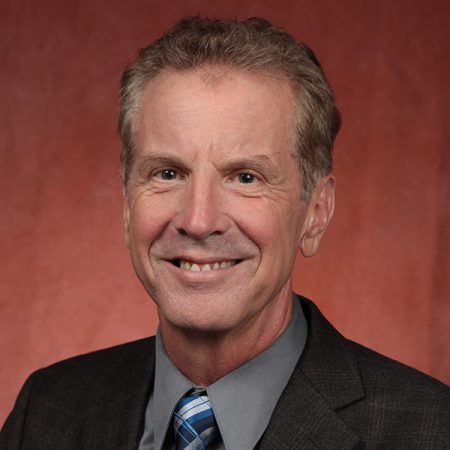
In August 1992, Hurricane Andrew tore a ruinous path through South Florida, wreaking broad structural devastation and leaving a trail of rubble, wreckage and debris in its wake. With lashing winds that exceeded 175 mph, the Category 5 storm leveled more than 60,000 homes, left 44 people dead and caused billions of dollars in damages. It is the most destructive recorded hurricane ever to strike the state of Florida.
Hurricane Andrew changed the way we think about, study and prepare for hurricanes in fundamental and enduring ways. With Aug. 24, 2017, marking 25 years since Andrew made landfall on the South Florida coast, FSU’s internationally recognized experts are available to discuss the lasting consequences of this catastrophic storm.
James Elsner, Earl & Sofia Shaw Professor and chair, Department of Geography
(850) 566-3800; jelsner@fsu.edu
Elsner is an expert on hurricanes and statistical models for long-range prediction. He researches the development of the science and technology for modeling the risk of a catastrophic storm along the nation’s coastline. He studies the relationship of hurricanes to climate factors, including El Niño and climate change. He also is the president and CEO of Climatek, a company that develops software for hurricane and tornado risk models.
“Hurricane Andrew had a number of important effects on a range of different fields and industries. For example, Andrew dramatically changed the property insurance business. Before Andrew, a $10 billion loss was unthinkable. After Andrew, many insurance companies went out of business and the industry was forced to rethink how to better estimate future losses. They went from estimating based on past losses to estimating based on the hurricane hazard. Today, hurricane hazard modeling is a multimillion dollar enterprise.”
Jack E. Nicholson, research faculty and director, Florida Catastrophic Storm Risk Management Center, College of Business
(850) 644-8217; jnicholson@business.fsu.edu
Nicholson served as the Chief Operating Officer of the Florida Hurricane Catastrophe Fund for the State Board of Administration of Florida for more than 20 years. Before that, he was a senior level manager for the Florida Department of Insurance. Nicholson has been involved in hurricane catastrophe issues from a regulatory, legislative and administrative standpoint since Hurricane Andrew in 1992.
“Leading up to Hurricane Andrew, Florida had gone through a 20-year period of relative calm as tropical storms and hurricane events are concerned. During this time, Florida’s population increased over 30 percent and had exceeded 13 million residents at the time of Andrew. Residential property insurance was relatively affordable and available at the time. Hurricane Andrew changed that. In 1992 dollars, Hurricane Andrew caused over $16 billion in insured residential and commercial property losses in the state.”
“Hurricane Andrew brought to light the lack of disaster planning and underscored the need for protecting the state’s economy from the potential adverse impact of a major catastrophe event. Poor, shoddy and inconsistent construction practices were considered a major attributing factor to the nature of the damage. Also, the lack of standardization in building codes resulted in significant variation in local requirements. The building codes were revamped after Andrew and a Florida Building Commission was eventually established to create a state-wide building code.”
Tisha Holmes, assistant professor, Department of Urban & Regional Planning
(850) 645-7889; ttholmes@fsu.edu
Holmes studies climate change and adaption strategies in coastal areas. Her interests include promoting socio-ecological resilience in disparaged communities, planning in ecologically sensitive areas and community participation and engagement. Her work seeks to uncover the intricacy of issues facing highly vulnerable localities while engaging and empowering communities to identify and direct their pathways towards shaping more resilient places.
“Hurricane Andrew reshaped the lives of South Floridians and ushered in a proactive culture of hazard mitigation, emergency preparedness and disaster response planning. Before Hurricane Katrina, Hurricane Andrew was the costliest disaster in the U.S. Andrew’s unprecedented destruction dissipated the complacency associated with a decade of relatively low hurricane activity and highlighted the real threats posed to people and property. The storm’s legacy prompted emergency managers to improve forecasting and early warning systems, update evacuation plans, develop targeted communications strategies and streamline planning processes at the federal and state levels in order to reduce the risk of future losses and improve pathways to recovery.”
Patricia Born, Payne H. and Charlotte Hodges Midyette Eminent Scholar in Risk Management & Insurance, College of Business
(850) 644-7884; pborn@business.fsu.edu
Born’s research is focused on the measurement of catastrophic risks and evaluating post-disaster responses of insurers and individuals. Her current research examines trends over the past 30 years in how insurers have repositioned themselves to bear the risk of natural disasters, including changing their capital structure, diversifying their exposures to different types of events and using a variety of risk transfer techniques.
“Hurricane Andrew was a wake-up call to the insurance industry. Before 1992, insurers had faced many major catastrophic events, but they were simply not prepared for the magnitude of losses from Andrew. The event propelled insurers to employ more effective tools for assessing risk, such as catastrophe models, which produce probabilistic estimates of losses that account for characteristics of the hurricane, the affected structures and insurance coverage. My research suggests that insurers are continuously re-evaluating their operations to ensure financial solvency in the face of natural catastrophic risks.”




